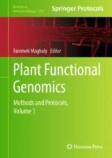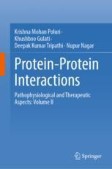Search
Search Results
-
GAP43-dependent mitochondria transfer from astrocytes enhances glioblastoma tumorigenicity
The transfer of intact mitochondria between heterogeneous cell types has been confirmed in various settings, including cancer. However, the...

-
In Vivo Analysis of Heterogeneous Extracellular Vesicles Using a Red-Shifted Bioluminescence Resonance Energy Transfer Reporter Protein
Current methods for characterizing the biodistribution of extracellular vesicles (EVs) are not sensitive enough to track EVs in vivo, despite...
-
Investigating Plant Protein–Protein Interactions Using FRET-FLIM with a Focus on the Actin Cytoskeleton
The study of protein–protein interactions is fundamental to understanding how actin-dependent processes are controlled through the regulation of...
-
The Charge Transfer Network Model for Arbitrary Proteins Complexes
Due to the highly complex chemical structure of biomolecules, the extensive understanding of the electronic information for proteomics can be...
-
Protein Sorting Prediction
Many computational methods are available for predicting protein sorting in bacteria. When comparing them, it is important to know that they can be...
-
Protein-Protein Interactions Visualized by Bimolecular Fluorescence Complementation in Arabidopsis thaliana Protoplasts from Leaf
Bimolecular fluorescence complementation (BiFC) is a powerful tool for studying protein-protein interactions in living cells. By fusing interacting...
-
Protein-Protein Interaction Studies Using Molecular Dynamics Simulation
Protein-protein interactionProtein-protein interaction (PPI) is a crucial event for many biological functions. Studying the molecular details of PPI...
-
Protein–Protein Interactions in Abiotic Stress Signaling: An Overview of Biochemical and Biophysical Methods of Characterization
The identification and characterization of bona fide abiotic stress signaling proteins can occur at different levels of the complete in vivo...
-
Relative Protein Lifetime Measurement in Plants Using Tandem Fluorescent Protein Timers
Targeted protein degradation plays a wide range of important roles in plant growth and development, but analyzing protein turnover in vivo is...
-
Transfer RNA modifications and modifying enzymes in Saccharomyces cerevisiae
Transfer RNAs are adaptor molecules, which decode mRNA into protein and, thereby, play a central role in gene expression. During the maturation of a...
-
Collectively encoding protein properties enriches protein language models
Pre-trained natural language processing models on a large natural language corpus can naturally transfer learned knowledge to protein domains by...

-
Unfolded Protein Response in Arabidopsis
The unfolded protein response (UPR) is a highly regulated signaling pathway that is largely conserved across eukaryotes. It is essential for cell...
-
Peptide-Based Mass Spectrometry for the Investigation of Protein Complexes
In the last two decades, biological mass spectrometry has become the gold standard for the identification of proteins in biological samples. The...
-
Drug Design Methods to Regulate Protein–Protein Interactions
Inhibiting anomalous protein–protein interactions has led to the discovery of drugs (small molecules, precisely) that can inhibit such interactions...
-
Protein-Protein-Wechselwirkungen
Bei jedem biologischen Prozess spielen Protein-Protein-Wechselwirkungen eine wesentliche Rolle: DNA-Replikation, Transkription, Translation,...
-
Protein–Protein Interactions in Neurodegenerative Diseases
Neurodegeneration is a state of progressive decay of neuronal structure and function. It has gained scientific attention owing to the fact that...
-
Protein Markers for Somatic Embryogenesis
The capacity for somatic embryogenesis is a remarkable property of plant cells. Somatic embryogenesis is the process by which somatic cells...
-
Direct GPCR-EGFR interaction enables synergistic membrane-to-nucleus information transfer
We addressed the heteromerization of the epidermal growth factor receptor (EGFR) with G-protein coupled receptors (GPCR) on the basis of...

-
Analyzing Protein–Protein Interactions Using the Split-Ubiquitin System
The split-ubiquitin technology was developed over 20 years ago as an alternative to Gal4-based, yeast-two-hybrid methods to identify interacting...
-
The unfolded protein response unfolds
As a key organelle of protein targeting and secretion, the endoplasmic reticulum (ER) plays host to a wide variety of protein maturation steps...
